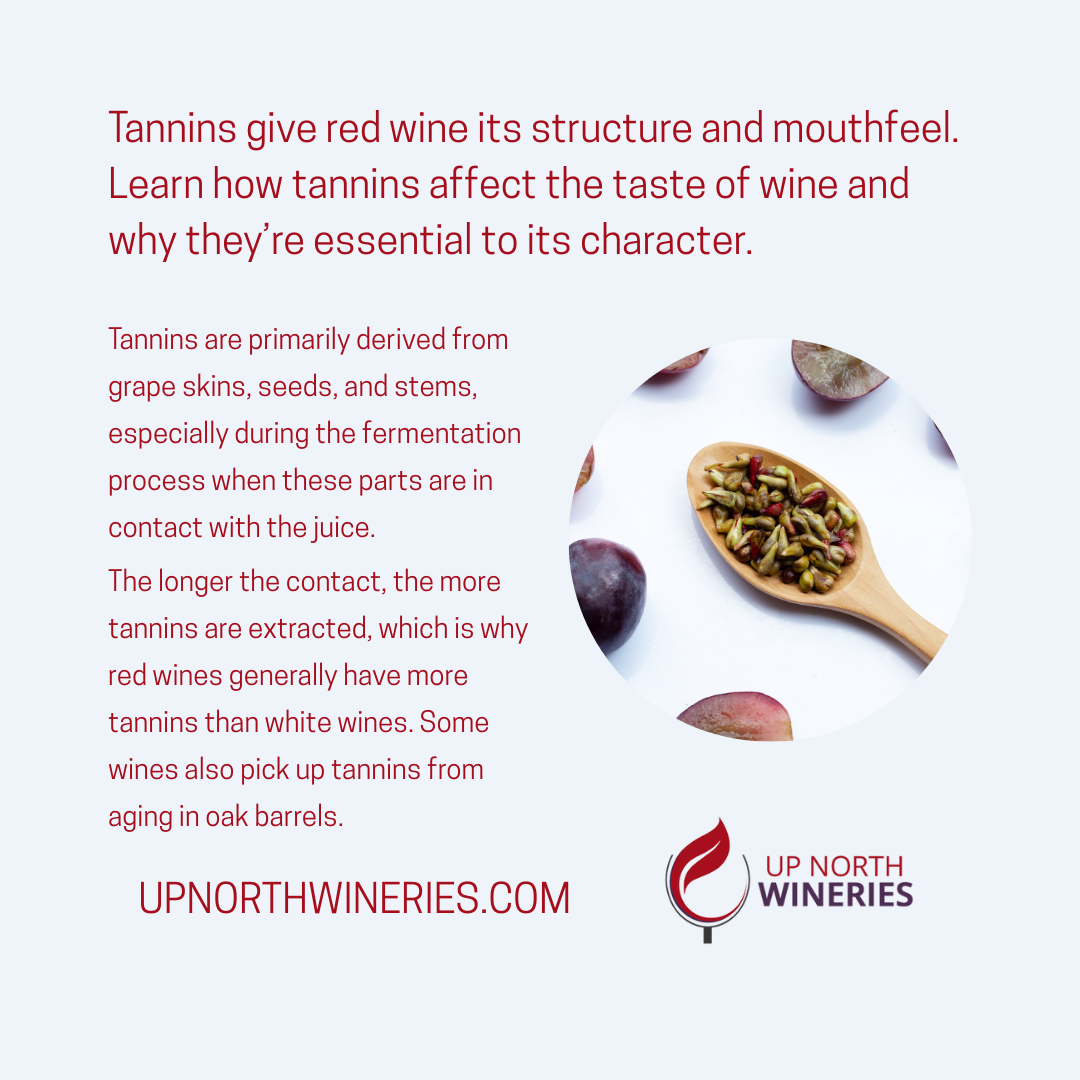How Do They Affect Wine?
Tannins are one of those wine terms that come up often, but what do they actually mean? If you’ve ever taken a sip of red wine and felt that dry, puckering sensation in your mouth, you’ve experienced tannins at work. These natural compounds, which come from grape skins, seeds, stems, and sometimes oak barrels, play a huge role in a wine’s texture and taste. But they’re not just there to make your mouth feel dry! They contribute to the structure, body, and aging potential of wines, especially reds. So, let’s dive into what tannins really are and how they influence the wine we enjoy.
What Are Tannins?
They are naturally occurring polyphenols found in many plants, including grapes, oak trees, and even tea. In wine, they are primarily derived from grape skins, seeds, and stems, especially during the fermentation process when these parts are in contact with the juice. The longer the contact, the more tannins are extracted. This is why red wines generally have more than white wines. Some wines also pick up tannins from aging in oak barrels, which adds another layer of complexity to the flavor.
They are known for creating that drying, astringent feeling on your palate, which is why many people associate red wines with a “dry mouth.” While this sensation may seem harsh at first, tannins are actually essential for giving wines structure and making them more enjoyable with food. They also help wines age gracefully by preventing oxidation. Over time, tannins soften, giving mature wines a smoother, more refined texture.
Red vs. White Wine
Red wines typically have higher tannin levels because they ferment with grape skins, seeds, and stems, allowing them to leach into the juice. White wines, on the other hand, are made by pressing the grapes and separating the juice from the skins right away, which limits tannin extraction.
How They Affect the Taste
While tannins themselves are not a flavor, they greatly impact the mouthfeel and overall experience of drinking wine. In high-tannin wines, you might notice that drying, puckering sensation, which is most noticeable in young reds. Wines with smoother, more “polished” tannins will feel softer and more integrated with the wine’s fruit flavors.
Tannins and Food Pairing
One of the reasons tannins pair so well with foods like red meat is due to how they interact with proteins. They bind to proteins, softening the astringency of both the wine and the food. This is why a juicy steak and a tannic red wine can be a perfect match.
Next time you pour yourself a glass of red wine, take a moment to notice the tannins at work. They play a vital role in a wine’s character, contributing to both its texture and its aging potential. Whether you’re enjoying a bold Cabernet Sauvignon or a smooth Pinot Noir, understanding tannins can help you appreciate the wine in a whole new way.






 Marisa Fancy along with her husband and four children dreamt of moving “Up North”. They had vacationed for years in northern Michigan and in 1995 they finally made the move.
Marisa Fancy along with her husband and four children dreamt of moving “Up North”. They had vacationed for years in northern Michigan and in 1995 they finally made the move.